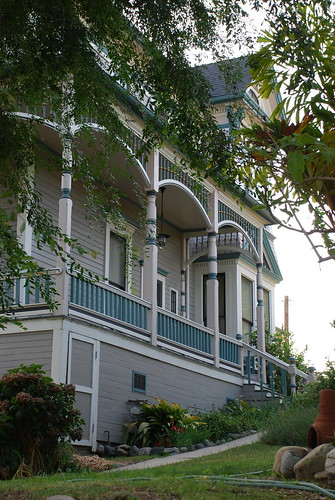If I weren’t going to be out of town for the Thanksgiving holiday weekend, you can bet your bippy I’d be taking advantage of this special tour of Los Angeles Historic-Cultural Monument No. 142, the Smith Estate AKA El Mio. If you cough up the five bucks (cheap!) and take the tour, why don’t you let those of us who can’t make it know what you thought? The event benefits the Milford Archaeological Research Institute. Here's the information and press release:
"The LA city Cultural Monument Victorian residence of El Mio will be open for a Home tour and craft fair November 28, 2010. El Mio is perched on a hilltop overlooking historic Highland Park. Completed in 1887, the home was built in the Eastlake Queen Anne-style by the occults writer Judge David Patterson Hatch. In 1890 the residence was acquired by Charles William Smith and remained in the Smith family until the 1960s. In 1900 Smith was appointed by Henry E. Huntington to run the Los Angeles Railway’s Yellow Car trolley system. From his hilltop home he could see the Arroyo Seco Valley being developed with rail lines running from downtown to Pasadena. It is due to the Smith's long residence that the house is listed as "The Smith Estate" on the National Register of Historic Places.continue reading...
In the late 1980s ardent preservationists Michael and Lacy Gage purchased the house
and were responsible for various restorations. The current owners Tim and Mari Parker
acquired the home in 1997, and after a devastating fire in 2001, have been working to
restore the home to its original luster. It has a rebuilt attic, the exterior color scheme is based on the original, and the interior has been largely decorated to reflect the original period. The home has Victorian furnishings and hand painted stenciling in the entrance hall, dining room, and many of the other rooms. The Parkers have graciously offered to open their home for a tour and craft fair. Tickets are available for the home tour by calling 213 309 8854 or via email at mariarchaeology@hotmail.com. Proceeds from ticket and craft sales are tax deductible and support the Milford Archaeological Research Institute, a non-profit organization dedicated to increasing public awareness and the understanding of archaeology in the Desert Southwest."



